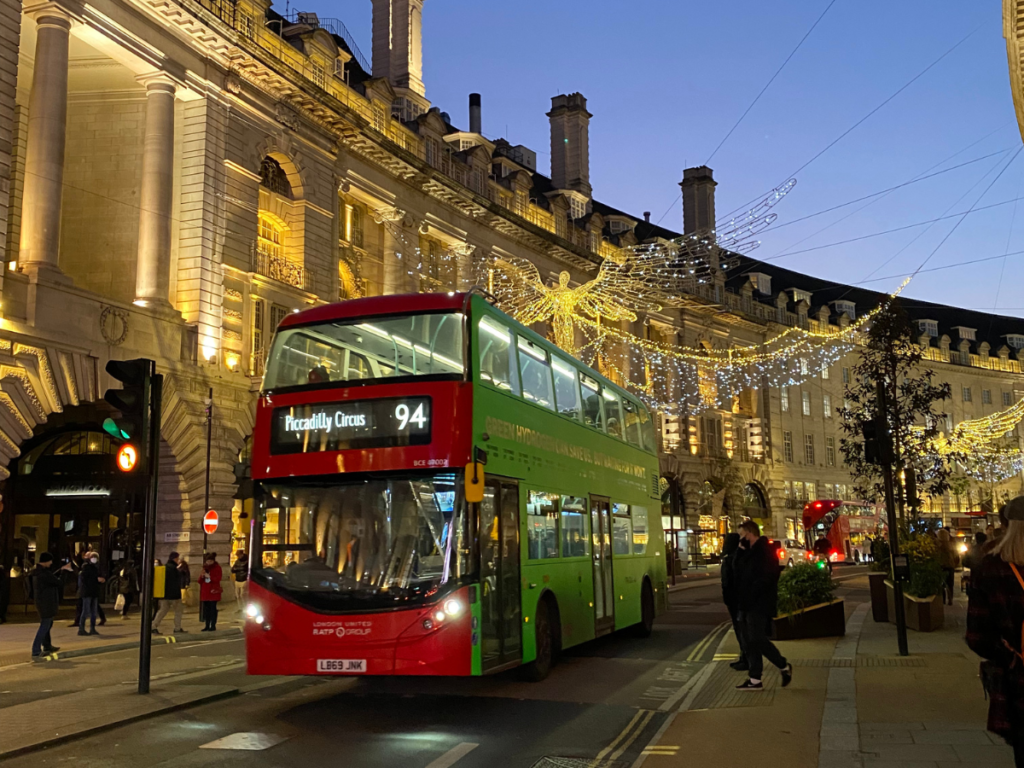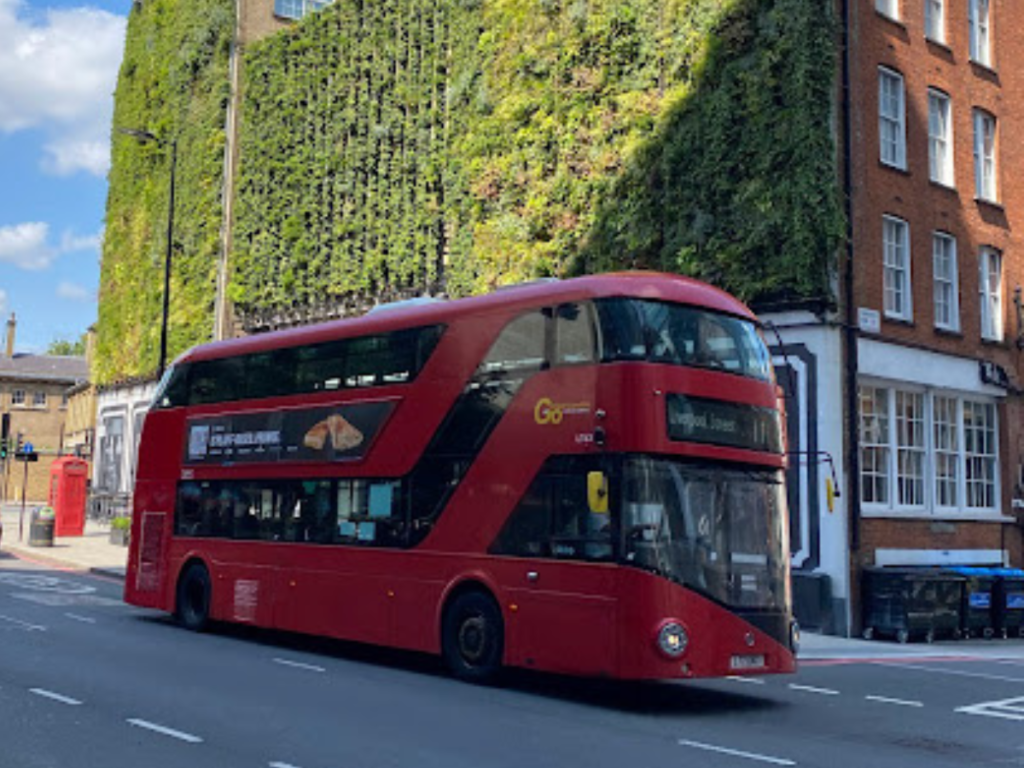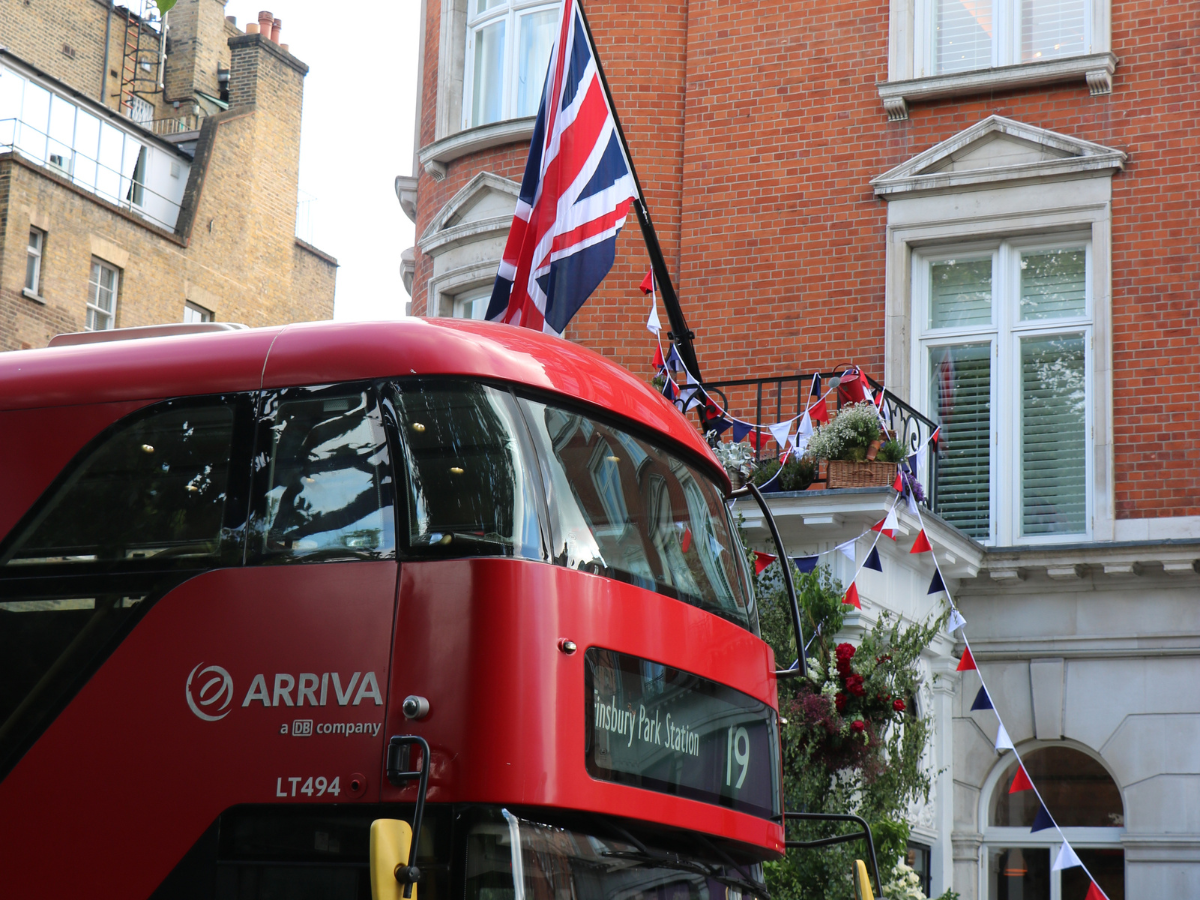London buses are a great way to get around and see the city. London has approximately 8,600 buses that cover 700 different routes, with the buses carrying about 6.5 million passengers a day (as stated by TFL)! The most important thing to know when learning how to use the London buses is that they are cashless – this means you will not be able to pay with physical money – our guide tells you how to pay and how to plan your route!
Table of Contents:
- How to Pay
- Planning Your London Bus Journey
- Signalling Your Bus to Stop
- Tips for When You’re on the Bus
- How to Get Off London Buses
- Accessibility
- Other Modes of Transports
How Do You Pay for London’s Cash-Free Buses?
As we’ve stated, London’s buses are cash-free – this means those pounds you got exchanged won’t come in handy here. There are a few ways to pay for the bus:
- Contactless – You can use contactless cards or Apple/Google Pay to tap onto the bus. Not all cards issued outside of the UK will work, so double check with TFL before arrival, or bring a backup.
- Oyster Card – The Oyster Card is a London travel card that can be topped up with money. You use this to tap on the bus.
- Physical Ticket – At train stations you can purchase travel cards for the day which can be used on both the buses and the tube.
When you step on the bus you will need to tap on the yellow circle by the driver, or show them your ticket. Unlike the tube, you do not need to tap out as the bus is a set fee.
How Much Do Bus Journeys Cost?
These are the current prices as of October 2023 – they may be subject to change.

A single bus journey will cost you £1.75.If you take another bus within the same hour, you’ll fall under the ‘Hopper Fare’ and not have to pay for the second journey.
There is a daily cap of £5.25 for bus-only travel 9 (if you use another transport method e.g. the tube in the same day your cap will be higher).
Children aged 5-10 travel for free on London buses. If you’re moving to London with kids aged 11-15, then we’d recommend you apply to get a Zip Card for them which gives them free travel on buses – this is not available for tourists and you will have to pay.
How to Plan Your London Bus Journey
There are a handful of ways we’d recommend to plan your bus journey across London:
- TFL Journey Planner – TheTFL website has a journey planner which allows you to filter to just bus journeys by putting in your start and end destination.
- Citymapper – Our favourite map for planning bus routes is Citymapper, this will tell you which stop to go to, which bus to get, and will also tell you when it’s time to get off!
- Apple/Google Maps – Your regular map app on your phone can also let you know which bus you’ll need to get and from where.
Finding Your Bus Stop
Once you’ve identified which bus you need to be on, your chosen method of route planning should tell you which stop. For popular locations, e.g. outside Waterloo Station, there are lots of bus stops which can be confusing. Luckily they are all given a letter for easy identification – take a look at the signs to ensure you’re standing at the right one!
At the Bus Stop: Getting a Bus to Stop for You

Once you’re at the stop it’s time to wait for the bus – luckily London buses come at relatively short intervals so you shouldn’t be waiting for too long.
When you see the bus you want approaching, go and stand near the area where the doors will stop and stick your hand out to signal to the driver that you want to get on. If you don’t do this, they may not stop if no passengers are looking to get off.
4 Tips for When You’re on the Bus
When you’re on the bus, you’ll need to pay straight away by tapping your payment method on the yellow circle (this is by the driver and very obvious when you board) or showing them your ticket. Here are our top tips for the bus:
- Move down inside the bus – Never stand by the driver or at the front of the bus as this can limit the driver’s view and make driving dangerous. If you do this, it is likely the bus driver will tell you off.
- Priority seats – There are priority seats on buses for those less able, those in wheelchairs, those who are pregnant or with small children. Try to avoid sitting in these seats, if you do be ready to give them up for someone less able to stand than you are. Buses can get busy so even if you’re not in a priority seat and see someone who needs a seat do give it to them.
- Hold on – Buses are on the main roads so may turn or stop suddenly. If you haven’t got a seat make sure you hold on to the hand rails provided.
- Get off at the back doors – The back doors of the bus are for getting off, whilst the front are for passengers to get on.
How to Request a Stop to Get Off
Requesting a stop on the bus is super simple, simply press the buttons on the upright rails before your stop. Make sure you do this after the last stop before yours.
Modern London buses have visual displays with the stops on, as well as audio announcements. We also recommend keeping an eye on your chosen map app too to make sure you get off at the right time.
Red Bus Accessibility

Wheelchair and mobility scooter users travel for free on London buses. The vehicles are also low to the ground and tend to have ramps that the driver can deploy for wheelchair users to embark. Each bus has a designated area for wheelchairs, with rails and request buttons at an appropriate height.
If you are blind, the drivers should recognise by your cane or guide dog and stop to check if they are the bus you want. You can also ask those around you. Guide and assistance dogs are welcome on all London transport. The buses use audio announcements for stops so you should be able to hear when to get off. In our experience we’ve also seen visually impaired passengers let the driver know when they want to get off, and the driver has ensured they’re aware when they get to their stop.
In our research for how accessible London buses are, we’ve actually struggled to find easy information from trusted resources, like TFL on this matter. TFL has one article on London travel with sight or hearing loss.
What Times to Buses Run in London & Night Buses
Whilst some bus routes will only run during the day, there are a lot of them that run 24/7. You’ll also find specific night buses that are named with an ‘N’ in front of their number. More buses tend to be put on outside of tube hours, so between midnight and 5am.
Other Transport Methods in London
London is known for its fantastic public transport. If you don’t fancy seeing the sights on a bus, then we also recommend learning how to take the tube for an efficient method of travel.
London also has many black cabs (official licensed London taxis) that are available for private fares.
We also recommend walking to as many places as you can, as this way you won’t miss out on any of London’s hidden gems!
About The London Eats List
We’re here to help inspire your next trip to our wonderful city! From guides to London’s oldest bookshop, to where to enjoy a romantic meal in the Big Smoke – we have it all for you.

